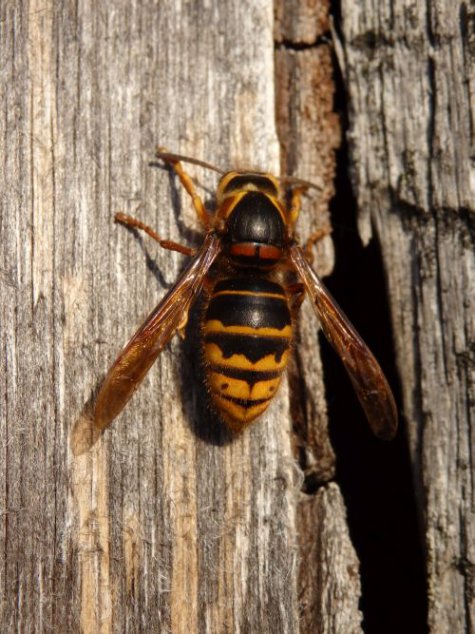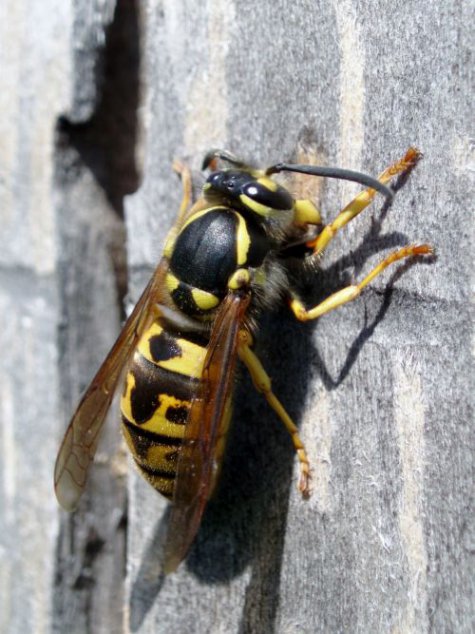Social wasps on the move
Text and photos Ave Liivamägi
Translation Liis
Median wasp (top) and German wasp (below) collecting wood fibres for nest-building
Median wasp Suur-metsaherilane Dolichovespula media
European wasp; German wasp Täpik-maaherilane Vespula germanica
Among our most familiar wasps are some socially living wasps of the Vespidae family with rather large yellow-and-black-patterned abdomens. They belong to three genera: Dolichovespula and Vespula (commonly often known as yellowjackets) and Vespa (hornets).
All social wasps build nests mainly of wood fibres that they peel off layer by layer from tree trunks, branches and often also faded wooden buildings with their strong jaws. In the early stages of nest construction female wasps can be seen at work but after the hatching of the workers only they collect the wood fibres, leaving paler streaks, the width of their jaws, on the wood surface.
The collected material is chewed into small particles and moistened with saliva, and from the resulting slurry-like mixture the combs as well the nest walls are constructed. The size of a nest depends on the wasp species, and for a particular species basically on where the nest is placed, but also on weather conditions and food availability. Externally the nests are generally flattened or oblong-oval, but nooks and crannies may always occur and make the shape of the nest rather indefinable. Nests are greyish, yellowish or brownish in colour depending on the origin of the building material.
The Dolichovespula wasps build their nests above the ground. The nests of some species can be found in the crowns of trees and shrubs, others in roof spaces of man-made buildings or in other artificial spaces. The Saxon wasp (Dolichovespula saxonica) and the median wasp (Dolichovespula media) are the most commonly occurring species of the Dolichovespula wasps.
In contrast the Vespula wasp species as a rule build their nests in underground cavities, for instance rodent burrows which are enlarged as the nest grows. Two common Vespula species are the common wasp (Vespula vulgaris) and the German wasp (Vespula germanica).
A representative of the hornet or Vespa genus, the European hornet (Vespa crabro) has the largest body of the socially living wasps and so also is the most feared. The species builds relatively large nests in natural as well as artificial cavities.










